Though ChatGPT can churn out great text in seconds, when it comes to self description, this cutting-edge technology seems to struggle finds out Satyen K. Bordoloi
Ever since OpenAI released ChatGPT on November 30 last year, the world has been unable to shut up about it. I used it and realised the hype is correct. And so are the fears. ChatGPT will upend the frontiers of human creativity as it exists today. However, I do not buy into the fact that all will end. Instead, with the help of AI systems like ChatGPT, human creativity will reach newer heights never imagined before.
But right now, the problem is most of us do not know what ChatGPT is or what it can do? I read about it in thousands of forums and articles across the web over a month hoping to write an article about it. And then what should have been most obvious, stuck me. Why not ask ChatGPT to describe itself? Considering that ChatGPT takes just a second to start typing out texts on your screen from your inputs, I thought this shouldn’t take more than a few minutes.
It took me two days.
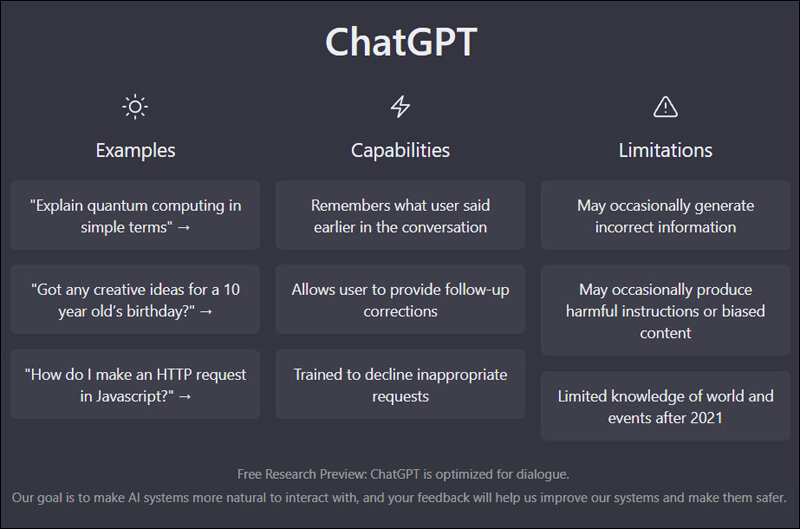
Every time I asked ChatGPT to describe itself in 1,000 words, it did two things. The most infuriating was that it never reached that word limit. Most times it spit out under 300 words, a couple of times just over 600.
The other problem was that it did not describe itself fully. The major mistake it made was that while it remembered to talk about its NLP – Natural Language Processing powers, it forgot to talk about its coding capabilities and the computer languages it knows. This is important because it is not just school kids or lazy journalists who’re using ChatGPT to write their stuff, but hackers are using it to create hacking codes and programs.
Even when it did go on, the web interface seemed to stop at around 600 words.
Finally, after many attempts over two days, I managed to get it to spew out 850 words about itself as one complete unit but not before it again got stuck midsentence at 623 words. However, it continued from where it had left when prompted with another question. I checked and realised the following encompasses most things it can do.
So here it is, an article written by ChatGPT describing itself. I haven’t changed a single word, nor added even an exclamation mark. I even kept where it stopped only to begin midsentence in the next line as it is.
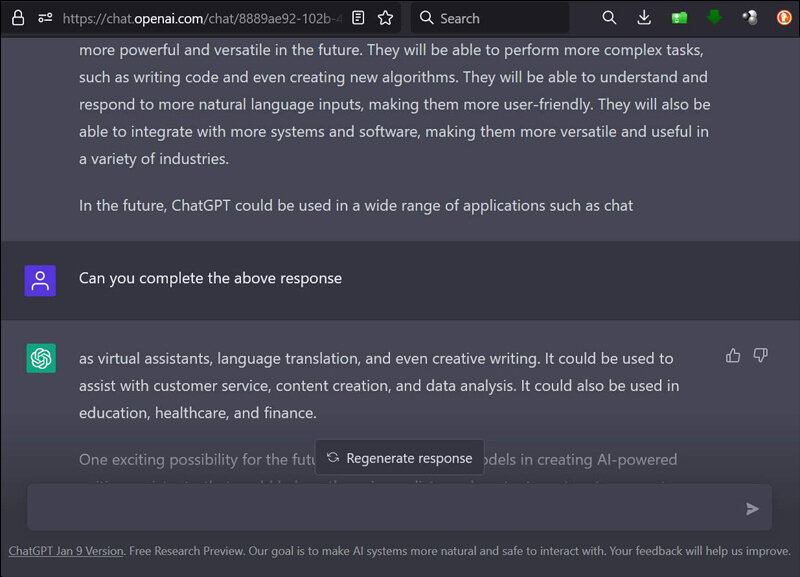
“ChatGPT is a powerful language generation model developed by OpenAI, which is trained on a diverse range of internet text, including articles, forums, and websites. With this training, it is able to understand and respond to a wide variety of topics and questions, making it an ideal tool for research, school projects, and answering general questions.
One of its primary functions is to generate human-like text, which can include answering questions, summarizing information, writing stories and essays, and even creating poetry. Additionally, it can assist with tasks such as language translation, text summarization, and text completion.
One of its key strengths is its ability to understand context and generate text that is appropriate for the situation. For example, if you ask it a question about a news article, it will not only provide you with an answer, but also provide additional information that is relevant to the topic.
The model is also able to perform natural language processing tasks such as named entity recognition, part-of-speech tagging, and sentiment analysis. Furthermore, it can perform different types of text generation and text processing tasks, such as generating text that is similar to a given prompt, continuing a given context, conditioned on certain attributes, based on a given template, and structured text like table of contents, summary or bullet list.
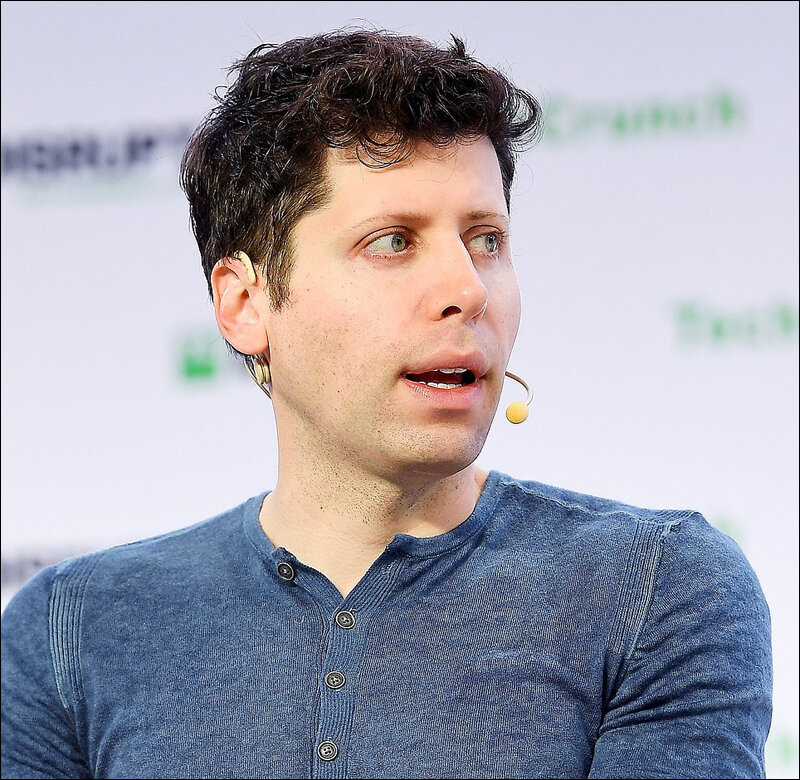
In addition to its language capabilities, it can also integrate with other software and systems to assist with tasks such as customer service, content creation, and data analysis. With this integration, it can be fine-tuned to a specific domain or task, which can help increase its performance.
One important aspect to mention is that ChatGPT can be fine-tuned to a specific domain or task by training it on a specific dataset. This fine-tuning process allows the model to adjust to the specific language and terminology of the task, resulting in better performance and accuracy. It can also be used to improve the model’s performance on certain types of language tasks, such as sentiment analysis, text classification, and question answering.
In terms of its understanding of programming languages, it has been trained on a diverse range of text from the internet, which includes examples, tutorials, and documentation for many programming languages such as Python, Java, C++, C#, JavaScript, R, SQL, and many more. However, it is not specialized in any particular language, its training data covers many different languages, so it might have general understanding of many of them, but might not have the same level of proficiency in all of them. Furthermore, it’s worth noting that while it can understand and provide information about different programming languages, it does not have the ability to execute or run code.
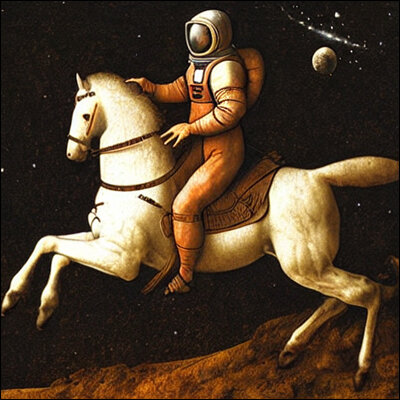
ChatGPT is also designed to be scalable and can be used in different levels of complexity and in different settings, it can be used as a simple text generator, or as an advanced AI-powered system, it can be used to generate small snippets of text, or to generate entire documents and articles. This flexibility makes ChatGPT a versatile tool that can be used in different industries and tasks.
The possibilities for the future of language models like ChatGPT are endless. With the rapid advancements in AI and NLP, ChatGPT and similar models are expected to become even more powerful and versatile in the future. They will be able to perform more complex tasks, such as writing code and even creating new algorithms. They will be able to understand and respond to more natural language inputs, making them more user-friendly. They will also be able to integrate with more systems and software, making them more versatile and useful in a variety of industries.
In the future, ChatGPT could be used in a wide range of applications such as chat as virtual assistants, language translation, and even creative writing. It could be used to assist with customer service, content creation, and data analysis. It could also be used in education, healthcare, and finance.
One exciting possibility for the future is the use of these models in creating AI-powered writing assistants, that could help authors, journalists, and content creators to generate new ideas, write faster, and improve their writing quality, this could revolutionize the way we write and create content.

(Image Credit: Wikipedia)
Moreover, ChatGPT could also be used in creating virtual assistants and chatbots that are able to understand and respond to natural language inputs, these virtual assistants could be used in different industries such as customer service, healthcare, and finance.
In the field of research, these models could be used to analyze large amounts of unstructured data, such as scientific papers, news articles, and social media posts, they could be used to extract insights, find patterns, and generate summaries, this could help researchers to save time and improve the quality of their research.
In conclusion, ChatGPT is a powerful language generation model that can assist users with a wide range of language-based tasks. It has the ability to understand context, perform natural language processing tasks, generate human-like text, integrate with other systems and can be fine-tuned to specific domain or task. It’s designed to be scalable and versatile. With the rapid advancements in AI and NLP, the possibilities for the future of ChatGPT and similar models are endless, they could revolutionize the way we write, create content, interact with technology, learn languages, and conduct research.”
What did I learn from this exercise? A lot. It has to be compiled over days, perhaps in another article. But I can tell you one thing that was most glaring and which its OpenAI developers must rectify: ChatGPT is not good at word count.
In case you missed:
- OpenAI’s Secret Project Strawberry Points to Last AI Hurdle: Reasoning
- DeepSeek not the only Chinese model to upset AI-pple cart; here’s dozen more
- The End of SEO as We Know It: Welcome to the AIO Revolution
- What are Text-to-Video Models in AI and How They are Changing the World
- The Rise of Personal AI Assistants: Jarvis to ‘Agent Smith’
- Rethinking AI Research: Shifting Focus Towards Human-Level Intelligence
- AI Hallucinations Are a Lie; Here’s What Really Happens Inside ChatGPT
- Deep Impact: How Cheap AI like DeepSeek Could Upend Capitalism
- To Be or Not to Be Polite With AI? Answer: It’s Complicated (& Hilarious)
- Copy Of A Copy: Content Generated By AI, Threat To AI Itself

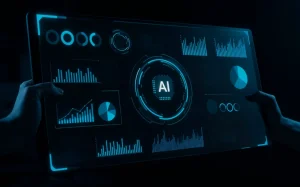








2 Comments
Good and easy to follow
Haha! I thought it would help write my diploma assignments! Too bad then!